Is your dog anxious?
This is a LONG post that covers several different topics related to dog anxiety such as separation anxiety, travel anxiety, thunderstorm anxiety and more.
*Get this post emailed to you as a pdf. Read it later at your convenience. Click Here.
Dog Anxiety Issues Covered in this Post:
Click on the links below to jump to a certain section:
- Signs of Anxiety in Dogs
- How to Help a Dog With Anxiety – Our Top Tips
- Dog Separation Anxiety
- Thunder and Fireworks Anxiety in Dogs
- Travel Anxiety
- Boarding Anxiety
- Fear at the Vet or Groomer
- Fear of Other Dogs
- Dog’s Anxiety Around New People
- Anxiety Around Bikes, Rollerblades or Strollers
- CBD Oil for Dogs and Other Products
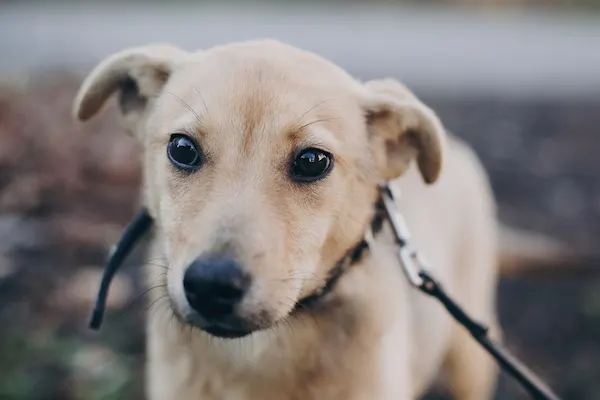
Signs of Anxiety and Stress in Dogs
First, the following are some general signs of anxiety in dogs:
- Hyperactivity
- Whining
- Pacing
- Panting
- Licking their lips (flicking their tongue)
- Trembling
- Raising one paw up to their body
- Wide eyes
- Having accidents (out of the ordinary)
- Destructive behavior
- Excessive barking
- Refusing food or treats (out of the ordinary)
- No interest in toys
- Ears back
- Excessive shedding
- Excessive yawning
Just because your dog is showing one of these signs it does not necessarily mean you have a big problem. Your dog might just be mildly anxious (we all are at times) or excited.
Sometimes dogs just need more exercise to manage their energy or time to adjust to new situations and environments. This is especially true if you recently adopted your dog or have had any other major changes such as moving or having a baby.
How to help a dog with anxiety – our top tips
You’ll see us repeating several ideas throughout this article because we believe they are THAT important for helping an anxious dog.
1. Exercise. Make sure your dog is getting enough physical exercise AND mental challenges every day. Generally, this should be a minimum of a 60-minute walk every day + 10-15 minutes of training.
Unless your dog is a young puppy or has a physical disability, a minimum of an hour walk is a reasonable amount of exercise for most breeds. If you are unable to physically walk your dog for an hour, consider hiring a dog walker or a friend capable of handling your dog.
Exercise alone will not magically make your dog’s anxiety disappear, but it will help. The less pent-up energy your dog has, the better, and if your dog is tired when you leave for work or when the fireworks start or when you have to take him to the vet, he will have an easier time.
See our post: Exercise ideas for hyper dogs
*Get this post emailed to you as a pdf. Read it later at your convenience. Click Here.
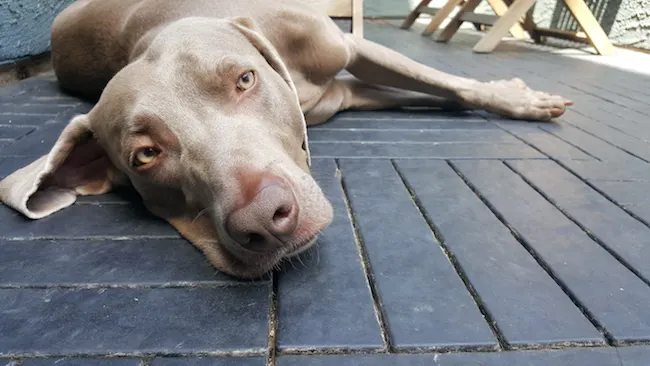
2. High-value treats or toys. If you can find something your dog is willing to work for even under stress, you’ll have an easier time helping him deal with situations that make him anxious such as road trips, thunderstorms or being left alone.
For keeping your dog’s focus on you in stressful situations, we recommend single-ingredient treats made with real meat or small pieces chicken, other meat or cheese.
If you need your dog to focus on a chew toy or puzzle toy, we recommend a Kong toy or two stuffed with tempting goodies like peanut butter and then frozen (so it’s harder to get out and lasts longer).
Finally, if you have a retrieving nut or a dog who loves to play tug, these types of toys can also work to your advantage in some situations. (Fireworks in the distance? How about we play some tug?)
3. Work with a trainer and a vet. Anxiety in dogs can be a serious problem, even enough for some people to consider re-homing the dog. Please do not hesitate to reach out to a professional trainer for help. We also recommend you talk with your dog’s vet about temporary anti-anxiety medication for your dog, depending on your specific situation.
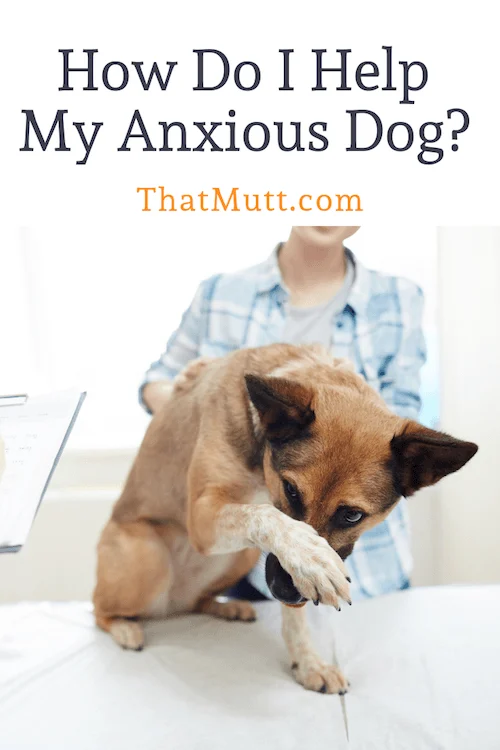
My dog has separation anxiety – what to do?
Some dogs feel anxious when they are left alone or when they are separated from their owners, even for short periods.
If you’ve recently adopted a new dog, it’s normal for the dog to need a couple of weeks to adjust to your new routine so she may be feeling anxious in general (understandable). She doesn’t necessarily have true separation anxiety. She just needs a reasonable amount of time to adjust to her new home.
Likewise, when you bring home a puppy from a breeder she is likely to cry the first couple of nights because she is separated from her usual routine of sleeping near her mother and littermates. Most puppies adjust within a week or less.
See our post: How long do puppies cry at night?
What is separation anxiety in dogs?
We consider a dog to have separation anxiety if she has never been properly conditioned to being left alone and therefore becomes nervous or afraid when her owner leaves the house.

Signs of separation anxiety in dogs
In addition to some of the signs of anxiety we listed at the beginning of this article, some other signs specific to separation anxiety include:
- An unhealthy attachment to you or another family member, following you everywhere when you’re home and always wanting to sit close to you, sit on your lap or lean on you
- Crying and scratching at a bedroom, bathroom or office door if she is not allowed inside with you.
- Frantic excitement to see you when you return, often jumping and scratching at you and barking or whining.
- Destructive behavior when left alone, such as chewing carpet or furniture or rugs when normally the dog is not destructive.
- Trying to break out of a kennel or to chew or dig through a doorway to the point of harming her mouth or paws.
- Having accidents when left alone, when normally the dog is potty trained.
- Refusing food or treats when left alone when normally the dog loves food.
How to help a dog with separation anxiety
1. Double your dog’s exercise. Double your dog’s exercise and make sure she’s getting a minimum of a 60-minute walk per day, every day. If you’re able to give her time to run off-leash or on a long leash in addition to your walk, even better. We also recommend a dog backpack to help your dog burn energy and have a “job” to do.
2. Stick to a routine before leaving. Dogs learn by repetitions and conditioning, so decide where your dog will stay when you are gone, and stick to it. If she panics when left in the laundry room, she is going to panic when left in the bathroom, bedroom or kennel, so just pick one place and stick to it.
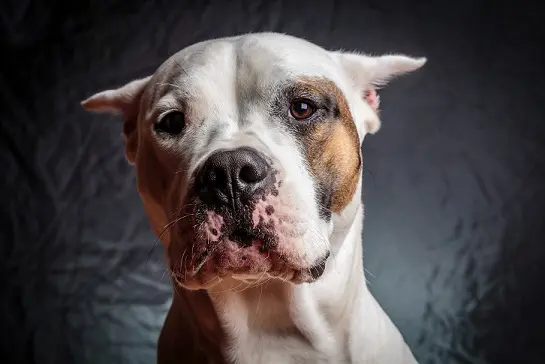
Establish your routine for leaving and try to be as consistent as possible every time. Let your dog outside for a potty break, then calmly put her in her “spot” 20 minutes or so before you leave. As you’re getting ready, don’t fuss and stress over her. Just be calm and emotionless.
As hard as it is, it’s best to just ignore your dog as you’re leaving. Going to work or wherever you need to go is simply no big deal, so do not feel sorry for your dog. Getting emotional and showing guilt is not going to help your dog, so don’t say goodbye. Don’t talk to her. Just go.
Likewise, don’t fuss over your dog when you return, either. Stay calm and do your best to ignore your dog for at least a few minutes.
3. Provide high-valued puzzle toys when you leave. For most dogs, a Kong toy stuffed with peanut butter and frozen is tempting and will give them something to focus on for a while when you leave. You can even leave 2-3 frozen Kong toys for your dog.
4. Take detailed notes on your dog’s specific “triggers.” If you can write down your dog’s exact “triggers” you can work to desensitize her.
For example, if your dog starts pacing and whining every time you pick up your keys, you could randomly jiggle your keys throughout the day even when you’re not going anywhere. You could even toss her a piece of cheese each time you pick up your keys. Eventually, the sound of your keys will not hold the same meaning.
Your dog might start to get anxious as soon as you’re making breakfast or when you’re drinking your coffee or maybe not until you put on your coat. It helps to take specific notes and watch for patterns so you can work to help your dog.
A helpful guide on how to desensitize your dog to being left alone is the book “I’ll Be Home Soon” by Patricia McConnell.
Other tips to help a dog with separation anxiety:
- Leave a TV or music on or other “white noise.” Consider the music “Through A Dog’s Ear” designed to help dogs relax.
- Hire a dog walker or friend to come walk your dog mid-day
- Take your dog to dog daycare once or twice a week. This is worth it even for the sake of decreasing your own stress and worry about what kind of damage you’ll come home to.
- Try some of the products mentioned at the end of this post such as a Thundershirt or Rescue Remedy
Additional resources on separation anxiety:
How to End Separation Anxiety in Dogs (That Mutt’s ebook)
How to prevent separation anxiety in dogs (blog)
*Get this post emailed to you as a pdf. Read it later at your convenience. Click Here.
Dog thunder and fireworks anxiety
Unfortunately it’s common for dogs to feel anxious during thunderstorms because of the noise, wind and change in pressure. Fireworks are also scary for dogs due to the sudden loud “explosions” and the high-pitched whistling some of them make.
If your dog is scared of thunder or fireworks, she might tremble, try to hide, pace, whine, pant heavily, drool, try to “dig” while indoors, paw at you, bark or even act aggressively. She might also refuse food, toys and attention.
Some dogs could harm themselves or damage property while trying to dig or “escape” from the storm or fireworks.
If your dog is scared of thunderstorms or fireworks, here are a couple ideas that can help:
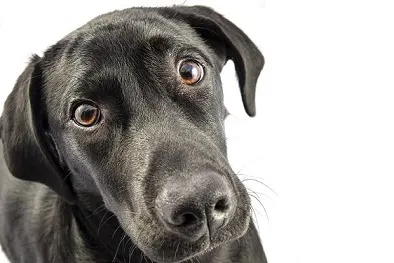
During the actual thunderstorm or fireworks:
1. Provide comfort. Not all trainers agree on giving affection to a fearful dog but we believe it’s OK to reassure your dog, especially when she is showing calm behavior vs. frantic behavior.
For example, if your dog is hunkered down on her dog bed, it would be OK to pet her and CALMLY say, “Good girl, Bailey.” If she’s racing around the room barking and panting, try to encourage her to focus on a Kong toy or to work on down/stay for highly valued treats.
It’s very important for you to be calm in order for your dog to also pick up on this. Show your dog that thunder and lightning or fireworks are no big deal. Try to just go about your normal routine.
2. Provide a safe place during fireworks or thunder. During a thunderstorm, your dog might want to hide out where she feels the most safe such as in her crate, on her dog bed, under a table, in your bedroom or in a closet.
It’s OK if she just wants to hunker down and wait out the storm. You might want to try drowning out some of the noise by running a fan, the air conditioning or a white noise machine.
3. High valued food.Give your dog a highly valued chew toy if she’ll accept it to distract her from the noise.
4. Try anti-anxiety products. The Thundershirt was designed for this very purpose, so it’s worth a try!
You might want to try dog appeasing pheromones or Benadryl for your dog. We go into more details on these products later on in this article.
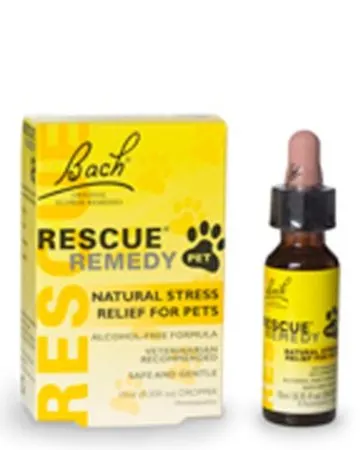
Preparing for future thunderstorms or fireworks:
1. Desensitize your dog to storms and fireworks.
This is no easy task, especially if your dog has an extreme fear, but the idea is to slowly get your dog used to thunderstorm sounds or fireworks sounds.
YouTube has thousands of thunderstorm and fireworks recordings. Here is one video that is 10 hours of thunderstorm sounds! The goal is to play thunderstorm or fireworks sounds at a low enough level so your dog is not fearful. Toss her treats or get out her Kong toy.
One option is to randomly play the sounds softly without acknowledging your dog. No reaction whatsoever from you. Ideally, your dog will just learn these sounds are no big deal, even as you gradually increase the volume over several days and weeks.
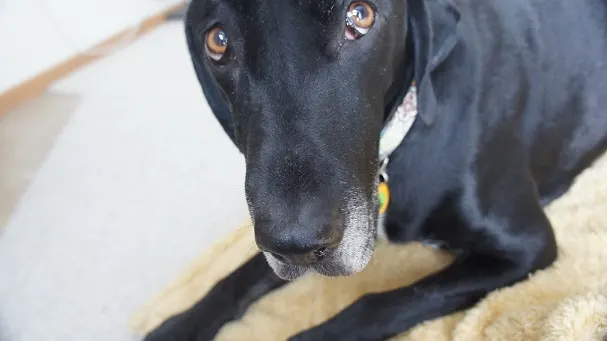
Another option is to give your dog a highly valued food reward while you play the videos. This can be to distract your dog at first but also to help him associate positive experiences with the storm sounds.
2. Distract your dog with high-valued chew toys before the storm starts.
This isn’t always possible, but if you can get your dog focused on a Kong toy or other puzzle/chew, it might reduce her anxiety. It’s much harder to get the dog to focus on something else after the thunder and lightning has started.
For example, Lindsay used to live right next to the fairgrounds that would put on an annual Fourth of July fireworks display. She would give her dog Remy a Kong toy stuffed with peanut butter about 10 minutes before she knew the fireworks would start. By the time they started, Remy was so focused on his treat, he didn’t care about the noise.
Other noises: Guns, band instruments, motorcycles, snowmobiles, the vacuum
If your dog is anxious around other types of noises, whether it’s your kid practicing the saxophone or your neighbor starting up his snowmobile, you can use some of the same ideas above to reduce your dog’s anxiety.
Obviously, some sounds are more unpredictable than others, which makes desensitizing your dog more challenging.
Additional resources:
How I desensitized my dogs to thunder (K9s Over Coffee)
Thunder anxiety in dogs (The Other End of the Leash)
Dog’s extreme fireworks anxiety – what to do (That Mutt)
Dog Travel Anxiety
Traveling with our dogs can and, in our humble opinion, should be a ton of fun, but realistically speaking, that’s not always the case.
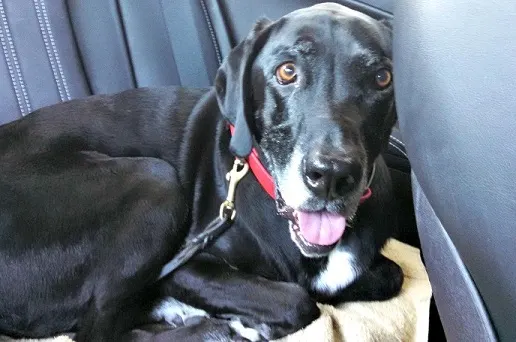
As a matter of fact, it can be truly challenging if our pups exhibit signs of anxiety as soon as they see us pulling out suitcases and starting to pack, and the thought of being asked to hop in the car elicits nothing but a more or less polite “no thanks” from a stressed out four-legged family member.
As we’ve mentioned before, regular exercise is an important ally in keeping your pup balanced, and it’s particularly helpful before leaving your home for a trip because he’ll be less prone to having pent-up energy while on the road.
Besides regular exercise, we suggest several proactive approaches to getting your dog comfortable with the idea of preparing for travel, and the actual time traveling itself.
1. Get your dog used to travel gear in advance.
Strategically place suitcases and duffel bags throughout your home and leave them within plain sight. You could open some and place a few items of clothing inside, and leave others closed.
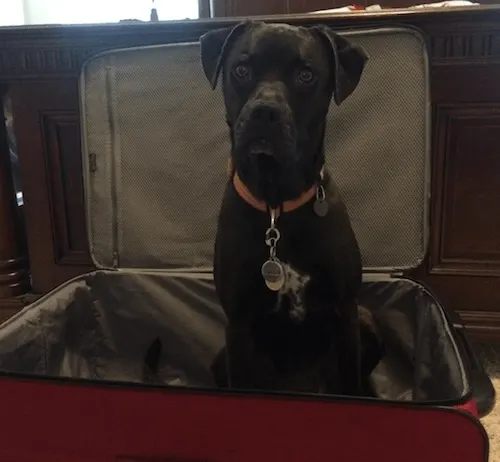
The goal of this exercise is to get your dog to accept their presence without any other reaction than a polite sniff rather than fearing its sudden appearance. This may take several days, or maybe even weeks or months, so consistency and patience are key here.
If your dog is food motivated, decorate your travel gear with high-value treats. You could use smelly (dehydrated) green tripe, pieces of (plain) string cheese, or cut up hot dog. Next, watch your pup find and enjoy the food jackpots. The goal here is to associate something positive (= the food reward) with the travel gear.
If your dog isn’t food motivated but loves toys, place some of his favorite toys on top of or inside the suitcases and bags instead. This will serve the same purpose as the food reward.
2. Get your dog used to the car without actually driving.
Start by letting your dog getting used to being around and in the car while it’s not in motion. You don’t even have to start the engine yet!
Open all car doors and calmly walk your leashed pup around the car. Following the same approach as mentioned above, reward him with food and/or a toy whenever he’s calmly following your guidance.
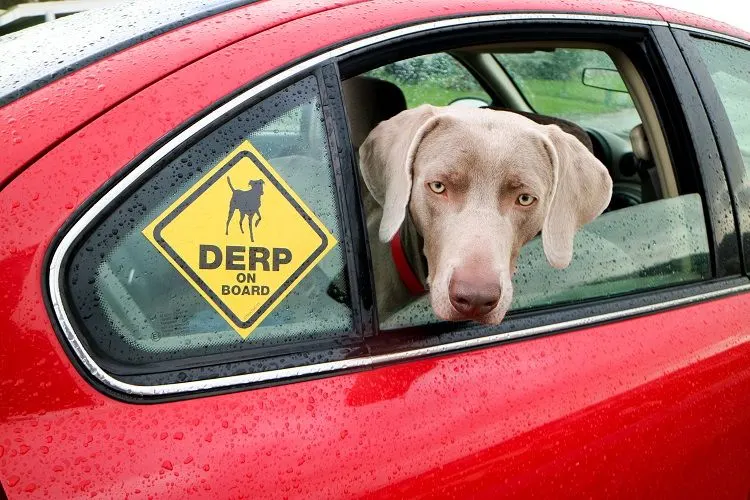
Next, place some food or a toy in the area of the car where he will be traveling, whether that’s the backseat area or the cargo space, to make it appealing to hop or be placed into the area without complaining.
After that, you can work on sitting inside the car together for short periods of time while handing out food or letting him have his toy as long as he’s being calm.
Once he’s fine hanging out in the motionless car, take it up a notch and start the engine. Again, reward calm behavior with food or a toy. It might help to play soothing meditation or piano music to help him relax. CBD oil is another option (more on that in our section on CBD oil and treats).
3. Take your dog on a short drive.
We are firm believers in car safety for dogs, so once you’re ready to go for a short ride around the block, consider securing your pup. We recommend a crash-tested kennel such as Gunner Kennels, or a vehicle safety harness that can be attached to the seatbelt or the frame of the vehicle.
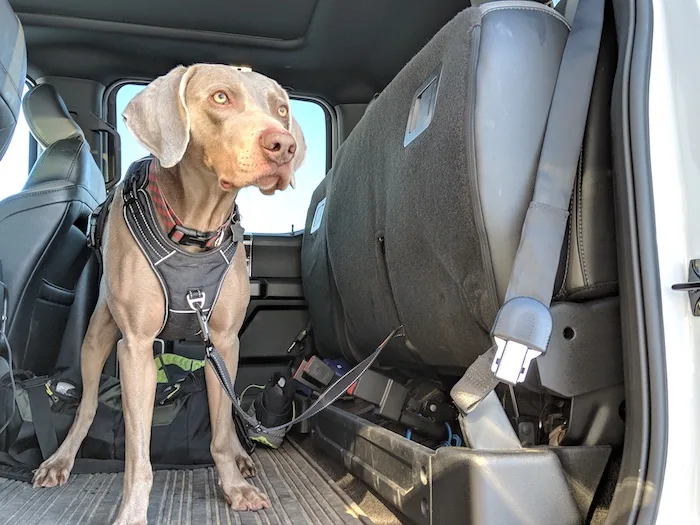
Take your pup along on fun car outings that don’t end at the vet’s or the groomer’s if he’s anxious in those environments (see our section below on anxiety/fear at the vet/groomer below).
Your final destination could be:
- a friend’s house for playtime
- a local park for a walk
- a pet-friendly store or
- a coffee drive-thru that offers edible goodies for dogs!
This will teach him that going for a ride has a positive outcome (a walk at the park, playtime with a friend, treats from a friendly stranger).
Now that your pup is comfortable going for car rides, add a suitcase or two when you take him for rides in order to replicate travel day as much as possible.
You could also map out the closest rest area to your geographical location and “practice” a pit stop with him. Alternatively, pull up to a gas station and practice there. Take him for a potty break, a little walk to stretch his legs, and even consider feeding him should you be planning on doing so during your road trip.
See our articles:
How to get a dog used to the car
3. Introduce your dog to different locations and sounds.
Your dog might become anxious at a hotel if he’s not used to going to new places on a regular basis. To set him up for success, take your dog to different locations to teach him that new sights, smells, and sounds are nothing to be concerned about.
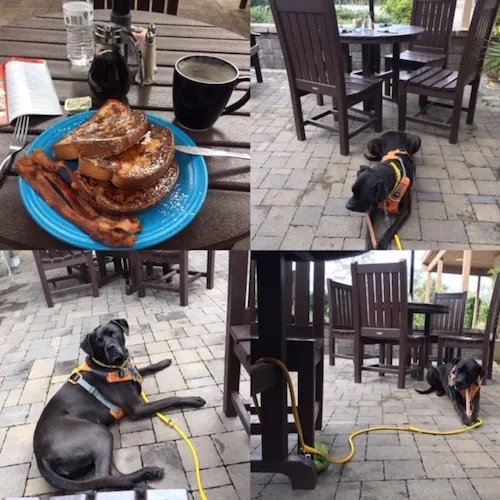
You could visit family and friends’ places, restaurants and coffee shops with dog-friendly al-fresco dining areas, pet stores, and dog-friendly stores such as Lowes, Home Depot and Tractor Supply.
If at all possible, see about spending a practice night at a dog-friendly hotel before you stay at one on your road trip.
A good low-budget option where pets (& kids) stay free are Red Roof Inn Hotels. It’ll give you a chance to see how your dog does and what you may have to work on with him, especially if you’ll be spending several nights at a hotel while on the road.
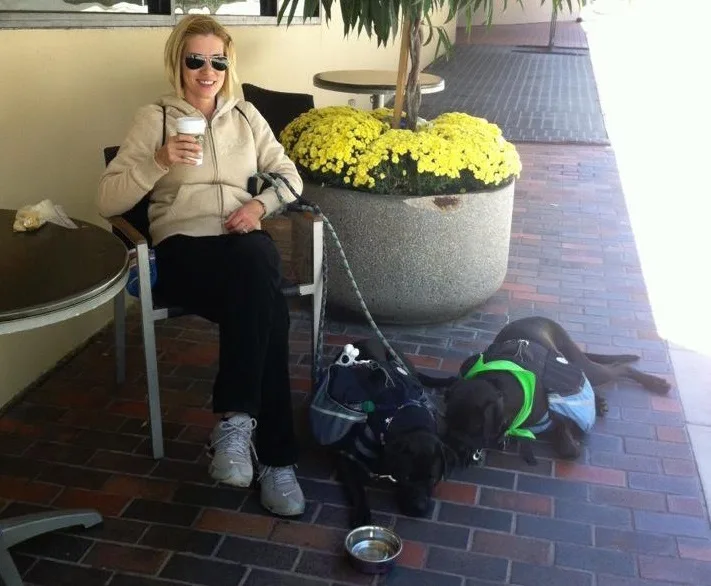
It’s a good idea to bring familiar items along to help your dog relax and feel at home away from home. This could be:
- his kennel if he’s kennel trained
- a favorite blanket and/or dog bed
- toys (ideally non-squeaky ones) and
- chews such as bully sticks, hooves and antlers
Chewing helps dogs relax tremendously!
If your dog tends to react to other dogs barking which is something you may experience at a hotel, work on desensitizing him by playing sounds of barking dogs in the comfort of your home prior to leaving on your trip. Reward calm and quiet behavior in reaction to the barking with food and/or toy rewards.
Start with short desensitizing sessions and slowly work your way up to longer ones. You can find an hour long video featuring barking dogs on YouTube here.
Consider giving your dog CBD oil or treats to help him relax (more on that in our section on CBD oil and treats).
One policy all dog-friendly hotels have in common is that they ask guests not to leave their dogs alone in their hotel rooms. We strongly recommend to adhere to this policy. Your presence alone will help your dog tremendously in staying calm and out of anxiety-induced trouble.
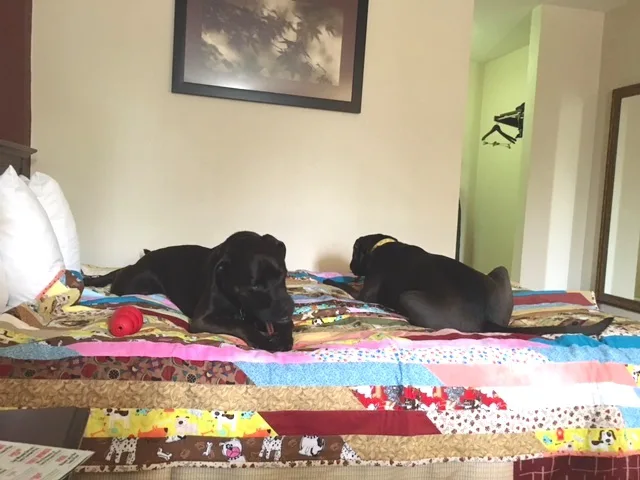
How to reduce a dog’s anxiety on planes
Talk to your regular and/or homeopathic vet about ways to keep your dog as calm as possible when on the plane, especially if they’ll be separated from you and traveling in the cargo area.
CBD oil might be one of the options to look into (more on that in our section on CBD oil and treats), others are medications such as Trazodone and Prozac. Both are anti-anxiety medications that need to be prescribed by your vet.
Make sure that your dog is thoroughly exercised on the big travel day. It’ll help in keeping him calmer.
Remember to be positive and calm as opposed to nervous and hectic, especially on the big travel day. Dogs mirror our feelings and reflect them, so working on your own display of emotions will be beneficial for everyone involved, including Fido.
Dog Boarding Anxiety
Unfortunately, every now and then it’s just not feasible to bring our dogs along when we travel, and we have to contemplate leaving them in the care of a boarding place, whether that might be at our vet’s or at a designated dog hotel.
If you know that your dog experiences anxiety when boarding, there are a few approaches you can take before dropping him off to set him up for boarding success.
How to reduce your dog’s anxiety during boarding
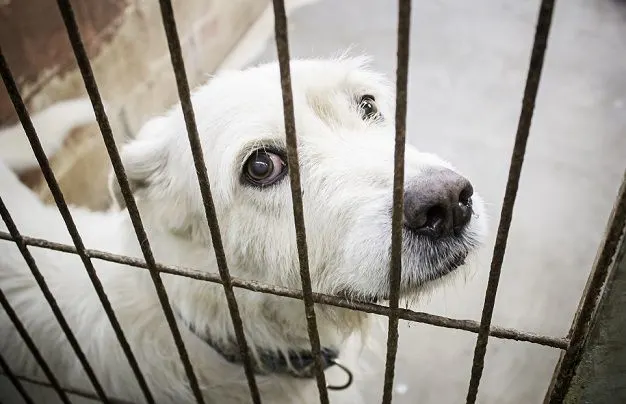
1.Tour the boarding facility in person beforehand.
Make sure it’s not deafeningly loud, but have the realistic expectation that some barking is to be expected.
Check to see if it’s a clean and happy place, ideally without announcing yourself to the place prior to your tour. Most boarding places will be happy to show you around during their normal opening hours.
2. Ask what your dog’s daily boarding routine will look like.
For example, how many times a day will he get to go potty and stretch his legs? How often will he play with other dogs? Is it staffed 24 hours? And what their protocol is in case of a medical emergency? Many boarding places are right next door to a vet.
3. Set up a practice night – one night of boarding.
That way, both you and your dog know what to expect prior to a longer stay. If the place features webcams, check in on your pup online to see how he does. Is he lounging around comfortably, outside exercising, or pacing around in his doggie suite?
Also pay attention to his demeanor when you pick him back up – does he seem happy or stressed out? Some dogs bark so much when they’re boarding that they’ll lose their voice. This is probably the most noticeable sign of anxiety he’ll be able to display.
Also note that your dog might be really tired when he comes home due to all the activity keeping track of other dogs during his stay, different sights and sounds, etc.
4. Bring your dog’s bedding and favorite toys.
That way he’s surrounded by familiar smells. Some boarding places offer their own food and treats, but it’s best to send your dog’s own food and treats along to avoid an upset stomach.
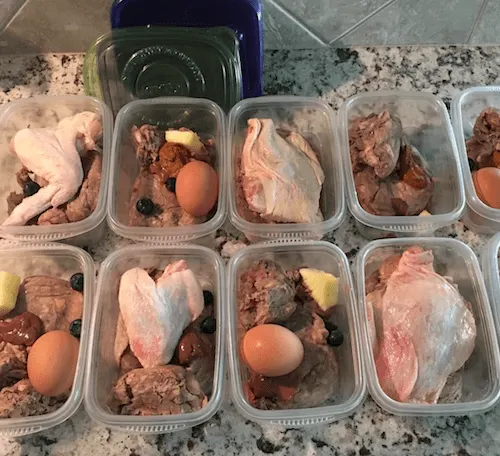
We’ve even brought our dogs’ own raw food along when we had to board them at a dog hotel a few times, and it was kept in the freezer/fridge on-site.
Consider hiring a pet sitter for your anxious dog
For some dogs, boarding facilities are just not going to work because they don’t do well with close proximity to other dogs and won’t be able to settle down at all.
In those cases, a good alternative is to hire a pet sitter who watches your dog in the comfort of your home where he won’t be anxious. You can check petsit.com and petsits.com to find a professional pet sitter in your geographical location.
You’ll want to interview the pet sitter in your home so that they and your dog get a chance to meet before you leave on your trip.
Make sure that your pet sitter carries professional pet sitting liability insurance in case of an accident. Ask for references, and check out their website/Facebook page for reviews and testimonials.
Also, discuss how many daily pet sitting visits are included for your dog in the pet sitter’s quote. Typically, a pet sitter will visit your dog 3-4 times per day and some offer the option of staying overnight with your dog for an additional fee.
You could also hire the pet sitter for a day or two before your actual trip, especially if it’s a longer one. This test will allow you to see how your dog does in their care, and how reliable the sitter is.
See our posts:
Questions to ask before boarding your dog
*Get this post emailed to you as a pdf. Read it later at your convenience. Click Here.
My dog is scared at the vet or groomer!
It doesn’t necessarily take a big travel day for dogs to be anxious. Some dogs will display fearful behavior when you take them to the vet or the groomer, and will display varying degrees of anxiety.
As we have suggested in the previous sections of this post, exercising your dog before exposing him to a situation that tends to trigger an anxious reaction can be very helpful in keeping him calmer and less anxious.
So if you know that anxious Fido is scheduled for a routine checkup at your vet’s at 10 am, take him for an hour long walk at 7 or 8 am, or pull up into your vet’s parking lot at 8:50 am and walk him for an hour in the surrounding area if at all possible.
This will not only burn physical energy and mellow him out, but it’s also going to show him that car rides mean getting to go for a walk as opposed to just to the vet (or groomer)!
How to help an anxious dog at the vet or groomer
In addition to prior exercise to an appointment, try the following tips to lessen your dog’s anxiety at the vet’s and groomer’s:
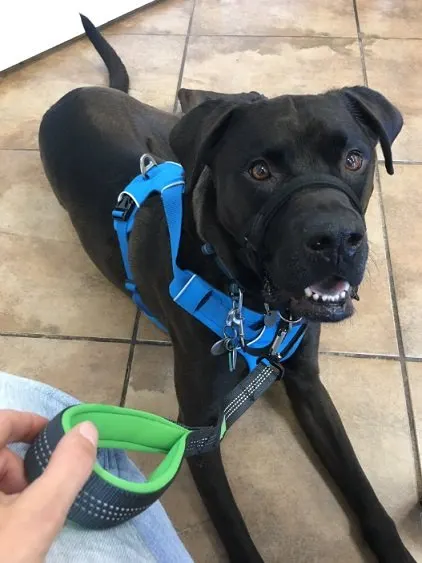
1. Socialize your dog to being touched on her entire body.
This should include her ears, mouth, paws, and tail, as both veterinarians and groomers will be touching and handling those areas. Reward calm behavior with treats, toys, or simply your attention, depending on what your dog is motivated by.
2. Take your dog to your vet’s and groomer’s just to say hello.
During these quick visits, the staff can give your dog a treat and just say hello. This will show him that good things happen there and can be a particularly beneficial exercise when you’re working on socializing your young puppy.
You could also take your dog to the groomer for a very brief brushing or a simple bath a couple of times before you leave her for a full groom, depending on your dog’s coat.
3. Ask about the groomer’s typical routine for “juggling” different dogs.
For example, will your dog be waiting in a crate for a few hours? Will this extra waiting time make her more anxious?
4. If your dog has anxiety about the hand drier, consider buying one.
That way, you can get your dog used to the sound at home or try using your own hair drier on a low setting to get her used to it.
5. Be calm and positive.
This will help your dog mirror your emotional status, so don’t use excited baby talk at the vet or groomer. If you’re nervous and overly excited, chances are he will be too.
6. Keep your dog on a short, but relaxed leash in the waiting area.
Even if your dog does fine around strange dogs, others may not and will appreciate their space, especially when they’re in pain at the vet’s.
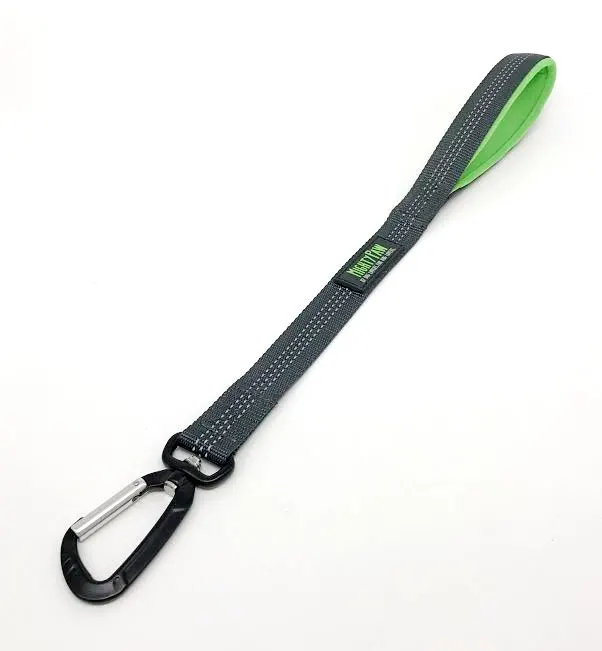
7. Change vets, if needed.
If your dog keeps showing signs of anxiety with one specific groomer or vet, consider trying a new dog salon or animal hospital.
8. Consider anti-anxiety medication for your dog.
For severe cases of anxiety, talk to your (homeopathic) vet about administering a calming remedy or medication before an appointment.
9. Use a muzzle.
If your dog might show aggression due to her fear or nervousness, condition her to wearing a soft muzzle before she is at the vet so wearing one does not cause additional stress.
Other resources:
How to get your dog used to nail trims
How to get your dog used to a muzzle
My dog is aggressive at the vet
My dog is scared of other dogs, what to do?
Some dogs are fearful of other dogs because of a bad experience. Others are scared for unknown reasons, perhaps a lack of socialization. They might be just fine with familiar dogs, but not so much with unfamiliar dogs.
A fear of other dogs is an especially challenging issue because the fearful dog often feels no choice but to respond with aggression. For example, if your dog is on a leash and an unfamiliar dog comes bounding up, your dog might feel trapped. With no way to escape, your dog might growl, bark, snap or lunge at the oncoming stranger.
What to do if your dog is scared of other dogs
1. Take detailed notes.
It’s helpful to keep a record of what exactly seems to trigger your dog’s fear. This can help you manage situations and slowly help your dog feel safer around other dogs. We suggest you keep a log of positive, neutral and negative experiences your dog has with other dogs.
Include the date, how your dog reacted and WHY you think this happened. These notes will help you notice patterns so you can plan and respond better in the future. Hopefully you’ll begin to notice some progress. Unfortunately, you’ll also have a few setbacks, but that is normal.
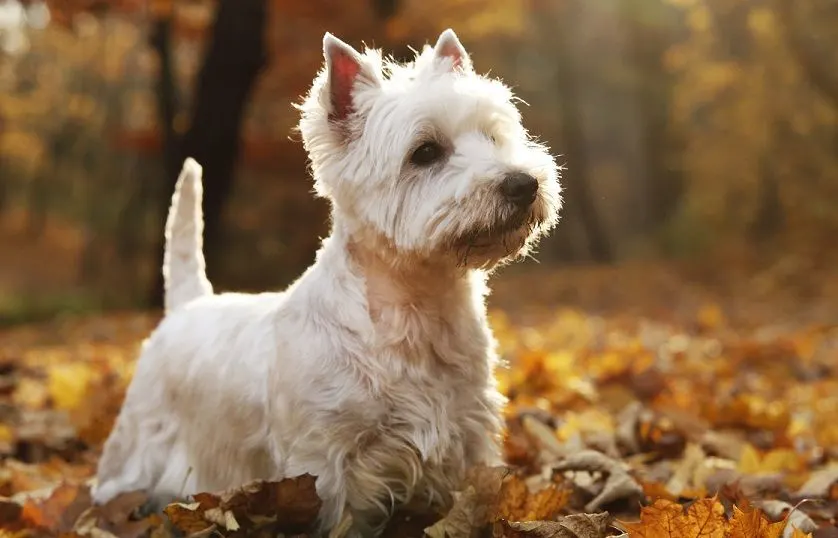
Neutral examples: Maybe you can walk by other dogs on the opposite side of the street and your dog seems to show no apparent reaction whatsoever.
On the negative side: perhaps she tenses up every single time a dog is approaching you head on during a walk, no matter the distance. Or maybe she lunges and snarls at every single large dog she spots.
Positive interactions: These might be harder to think of, and maybe you don’t even have any yet!. Does your pup have a single dog friend she trusts? Will she look to you and accept a treat when you pass the neighbor dog?
2. Management – avoid stressful situations
While you eventually want to help your dog feel confident around new dogs, you also want to control as much as possible in her environment so she doesn’t have negative experiences that set her back.
No, you can’t control everything. Off-leash dogs are always a potential issue, but you can do your best to go for walks in controlled, predictable environments.
For example, I know the dogs in my neighborhood are usually leashed and I know which houses have fenced dogs that tend to lunge and bark at us. I also know the trails near us always have off-leash dogs running around, so I would avoid those spots if my dog were afraid of other dogs.
3. Use desensitization and counter-conditioning
Eventually, you want your dog to associate other dogs with treats instead of fear. Like, “Oh, another dog! That’s great! Where’s my string cheese?”
The goal is to change her emotional response very slowly and gradually over time. To do this, make sure you do not rush your training. Head out for a walk with your dog using a training collar or no-pull harness, treats and a treat bag.
Seek out other dogs but stop just far enough away so she does not bark, stiffen or react at all. This distance is different for every dog, and it’s why taking detailed notes is so important so you can notice patterns.
While your dog is still calm but the other dog is in sight, give her several small treats one after the other. Then, TURN AND LEAVE before you get close enough for your dog to react.
You want your dog to think, “Wait! Why are we leaving? I want more treats!”
Then very slowly increase the challenge over several weeks and months.
4. Seek out walks with CALM, friendly dogs
If you’re lucky enough to have family, friends or neighbors with calm, friendly dogs, then it might be a good idea to try setting up some walks together.
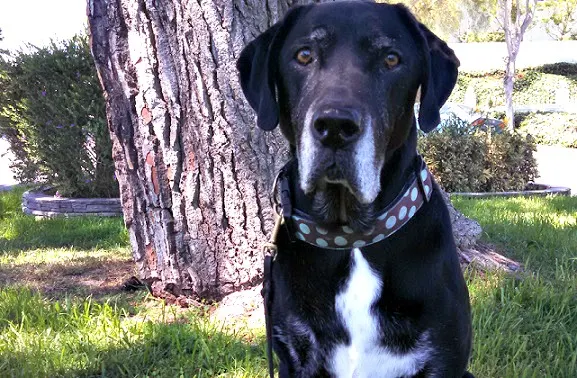
The key here is to avoid head-on greetings, which is very difficult for some HUMANS to follow through with. Instead of letting the dogs barge up and greet each other, you want to start out with one person and dog walking on one side of the street and the other pair on the opposite side of the street. So, you’re parallel to each other but with some distance.
If the dogs are both calm and relaxed, you might consider moving closer together or to the same side of the street with one in front of the other after 10 or 20 minutes. Then, only if both dogs are relaxed (gently swaying tails, no tension), you MIGHT consider letting them interact.
However, sometimes it’s better to just quit while you’re ahead and end on a positive note. Meaning, it’s OK to end your walk without any real interaction between the dogs at all. Just the fact that your dog was able to calmly go for a walk with another dog in sight is a huge accomplishment. So, don’t’ push your luck. Hopefully you can schedule another walk really soon!
5. Take a group obedience class or hire a trainer
For some dogs, the right group obedience class can be very helpful because they learn to work around other dogs without the pressure to interact. For other dogs, this situation is way too stressful so you have to understand your dog and find a class with an instructor who understands your dog’s anxiety.
Obviously you need to find a class where the other owners are going to be respectful and not allow their dogs to bound right up to yours. It helps if you can explain your situation to the instructor ahead of time and then go and watch a class or two without your dog or with your dog simply observing on the sideline to see if it’s the right fit.
A one-on-one trainer can be extremely valuable as well because she can observe you and your dog and offer suggestions on what you should change. Sometimes dog owners get so caught up in our own emotions that they miss some obvious mistakes they are making!
Other resources:
The book Feisty Fido by Patricia McConnell
How to stop my dog from barking at other dogs
Dog is scared of new people … men and kids
Some dogs react poorly to certain groups of people, and this is particularly true regarding men and kids. Both tend to be louder and less nurturing than women, which could be the trigger for an anxious reaction in the first place.
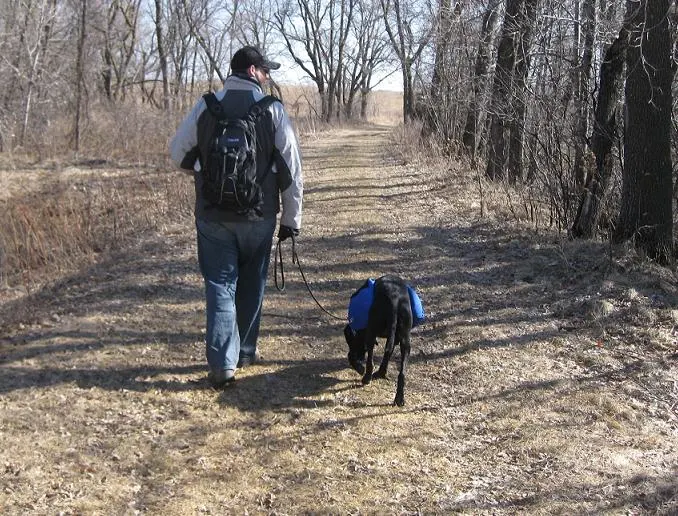
That being said, dogs who are affected are usually those who weren’t properly socialized to a large variety of people when they were younger and on an ongoing basis throughout their lives, as well as the ones who’ve had a bad experience with men or kids.
If your dog exhibits signs of anxiety around men or kids, we suggest trying a few different approaches to helping your dog get over her fear:
1. If you recently welcomed a puppy into your home, we suggest making a list of people to socialize her to.
This will set her up to becoming a well balanced, confident dog who isn’t afraid of being exposed to new faces. Work on exposing your puppy to friendly new people throughout her entire life to keep her people skills sharp.
People to socialize your puppy to:
- Women and men in general
- All age groups: Babies, elementary school kids, teenagers, adults, seniors
- As many different ethnicities as possible
- Uniformed people
- People wearing hats, large coats, sunglasses, canes, walkers, costumes
This is particularly easy to do if you live in an apartment complex, or if you visit friends who live in one. Other good places to meet a variety of strangers are local parks and grocery store parking lots. You could also take a puppy kindergarten class or a basic obedience class that’s taught by a man.
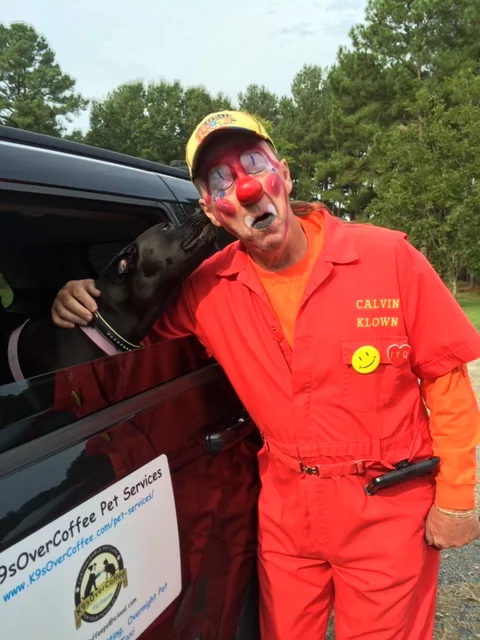
2. If you adopted an older dog and you notice anxiety around men and kids, you’ll have to help her overcome her fear by introducing her to positive experiences with those groups of people.
Try enlisting the help of male friends and of friends with (younger) kids, but don’t shy away from reaching out to a professional dog trainer if your own efforts remain fruitless and your dog reacts aggressively.
When you first work on re-introducing your dog to men or kids, have them ignore your dog at first. This means not touching her, not talking to her, not even making eye contact with her. Just have them be present.
Once your dog gets used to them and reacts calmly to their presence, have them win your dog over by tossing some high-value treats her way, or a toy, depending on what your dog is motivated by. Don’t force your dog to interact with them, but give her time to approach them on her own.
You could help your dog prepare for a man’s or a kid’s presence in your home by asking them for a tshirt or other item of clothing that smells like them. Place the item in your dog’s bed or wherever she likes to nap for a few days so that she can get used to the particular smell of that person prior to them coming to your home.
Another great idea that seems to help is to go for a “group walk.” If your dog is scared of a certain friend or a friend’s child, then try heading out for a walk together. For a lot of dogs, this helps them associate a positive experience with the new person.
Dog scared of bikers, rollerblades or skateboards
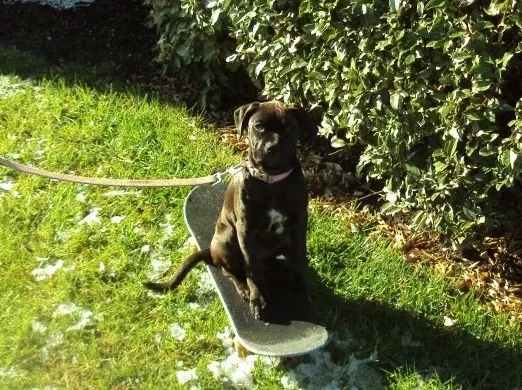
Sports equipment like bikes, skateboards, and rollerblades represent another anxiety trigger for some dogs, especially when their wheels are in motion. Even strollers can be an issue.
Similarly to what we mentioned in the previous section about anxiety around men or kids, it’s likely that your dog’s fear of sports equipment in motion stems from not having been socialized to those items as a puppy, and furthermore not having been (re)introduced to them at a later time in her life.
Maybe she’s even had a bad experience that involved someone on rollerblades, a skateboard or a bike running into her or over her paws.
How to get your dog used to bikes, skateboards or rollerblades:
1. Introduce the sports equipment or stroller when they’re not in motion.
Much like we suggested getting your dog used to travel paraphernalia in the section “Dog Travel Anxiety,” leave the bike, skateboard, or rollerblades within plain sight in your home so that your dog gets used to their presence in a non-threatening way
Decorate them with high-value treats if your dog is food-motivated, or with a favorite toy if your dog responds well to toys. This will help her associate positive things with the items.
2. Slowly move the bike, rollerblades or stroller.
Once your dog does fine around the items when they’re not in motion, slowly start moving them inside your home. Reward your dog’s calm behavior with high-value treats, her favorite toy, and praise.
3. Introducing your dog to bikes and rollerblades outside.
You can start by simply pushing the bike a few feet within her sight, using only one foot on the skateboard to move it a few feet, and only putting the rollerblades on one foot for starters.
Reward calm behavior with treats, toys, and praise, and take very small steps towards the larger goal of relaxed behavior around yourself or somebody else using the sports equipment in full motion.
Other ideas to help your dog get used to bikes, skateboards or strollers:
- Enlist the help of a friend to reward your dog’s calm behavior when she sees you bike, skateboard, or rollerblade in front of her.
- Consider wearing a treat bag when you’re walking in your neighborhood or a park where it’s likely you’ll encounter wheels. It’ll make rewarding your dog easier.
- It may take several weeks or months to get your dog used to reacting calmly to wheels in motion, so be patient.
See our articles on That Mutt:
- My dog attacks bikes
- How to teach your dog to walk next to a stroller
- Why Do Dogs Get Anxiety In The Car?
CBD Oil for Dogs – Does it help with anxiety?
CBD stands for Cannabidiol and is harvested from the cannabis plant, but it doesn’t contain any THC (Tetrahydrocannabinol), which is the psychoactive compound responsible for getting people “high”.
The biggest advantages of CBD oil over traditional anti-anxiety medications are that it reduces anxiety without getting our dogs high, and that it practically doesn’t have any side effects other than soft stool or lethargy which can occur when taken in too large amounts. Both are easily corrected by reducing the amount of the oil administered.

It takes about 1-4 weeks for the oil to start working, so it’s important to be patient when starting the CBD oil treatment.
CBD oils come in a bottle with a dropper, making the dosage very easy. The drops can either be administered orally or mixed into your dog’s food, but they should be given around feeding time to avoid an upset stomach. The amount to be administered depends on your dog’s weight and dosage guidelines can be found on the CBD oil bottles.
Other benefits of CBD oil for dogs:
- Reduces pain & inflammation
- Helps fight cancer
- Helps treat seizures
- Helps fight heart disease
- Strengthens the immune system
- Supports joint & GI tract health
- Helps in end of life comfort
CBD oil brands we recommend:
CBD Treats for Dogs
CBD treats are a good add-on to a CBD oil treatment, but are less effective on their own because the correct dosage is a lot harder to determine. In treat-form, the effect of the CBD will take longer to kick in because it has to pass through the dog’s digestive tract. Also keep in mind that treats will contain more ingredients besides the CBD.
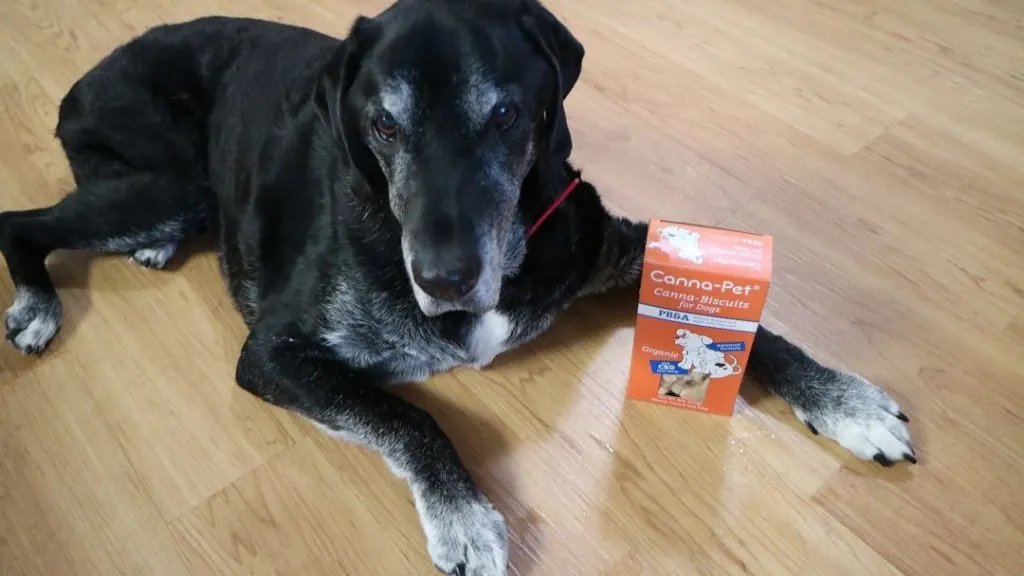
CBD treats are, however, great for training purposes when getting your dog used to being around certain objects such as the ones mentioned in the sections “Dog Travel Anxiety” and “How To Help A Dog With A Fear Of Bikers, Skateboards, and Rollerblades.”
CBD treat brand suggestions:
Other products to help with a dog’s anxiety
Alternatives to prescription anti-anxiety medications:
- Dog appeasing pheromones like Adaptil
- Essential oil blends like Calm Down by Earth Animal
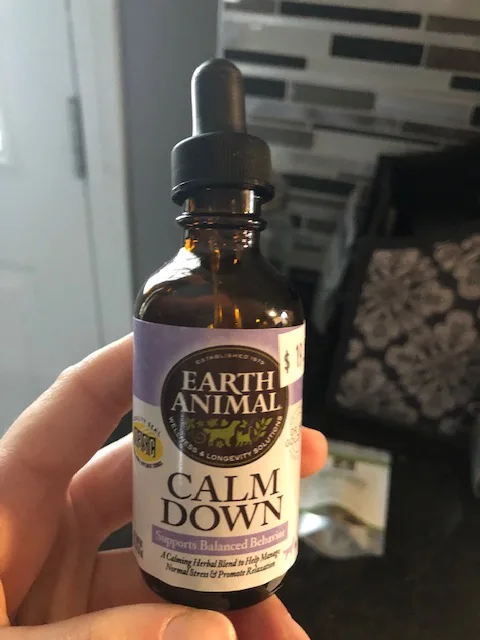
- Essential oil diffusers
- Flower essences like Rescue Remedy for dogs
- Some vets recommend Benadryl for fireworks or travel anxiety
- CBD (see our section above)
*It’s OK to ask your dog’s vet about prescription medications for your dog as well. Hopefully this will only be temporary as you continue to work on training.
More products for dog anxiety:
- Thundershirt
- Music “Through A Dog’s Ear” designed to help dogs relax
- A plush “heart beat” toy for puppies to adjust to their new homes
- Kong toys or other puzzle toys, bully sticks, etc.
- Dog backpack to give the dog a job and decrease energy
- Dog safety belt for the car
Books to help dogs with anxiety
We recommend the books by Patricia McConnell:
“I’ll be Home Soon” for separation anxiety
“The Cautious Canine” for general fears
“Feisty Fido” for dogs with leash aggression
Does your dog have anxiety?
We hope this article has helped you brainstorm ideas for your specific dog’s anxiety troubles.
If you have your own suggestions for helping a dog with anxiety or if you have any questions, please leave them in the comments below!
*Get this post emailed to you as a pdf. Read it later at your convenience. Click Here.
About the bloggers:
Barbara Rivers writes regularly for That Mutt. She is a blogger, raw feeder and dog walker and maintains the blog K9s Over Coffee.
Lindsay Stordahl started the blog That Mutt in 2008. She lives in Montana with her weimaraner Remy.

Kim Chappell
Tuesday 19th of February 2019
Awesome article, thank you! I'd like to add for dogs who are anxious about loud noises try taking a solid plastic dog crate, fill half full with straw, and scatter treats inside. Put crate in a dark quiet area, play classical music. Also, my late Rottie /Pit mix was terrified of gun shot noise, I had friends who had bird hunting dogs= we got them all together for retrieval work with bumpers, slowly added a quieter (22) shot noise when bumper was thrown. My dog standing next to the hunting dogs got so excited about the bumper she stopped worrying about any gunshot noise after that. :) A side note- consider the dog's state of mind when using affection = if the dog is calm- okay , dog is anxious no affection as the dog sees it as being praised for being anxious, and will get worse. Obedience training helps a ton with anxious dogs as well, control the mind and you will control the body. :)
Kim Chappell
Tuesday 19th of February 2019
Tread mill is also great for indoor dog exercise !
Lindsay Stordahl
Tuesday 19th of February 2019
Thank you, Kim! Those are all very helpful ideas.
Julia at Home on 129 Acres
Monday 18th of February 2019
What a great article. So comprehensive. Thanks for the detailed discussion of so many different scenarios and all of the links to other resources. This is very helpful.